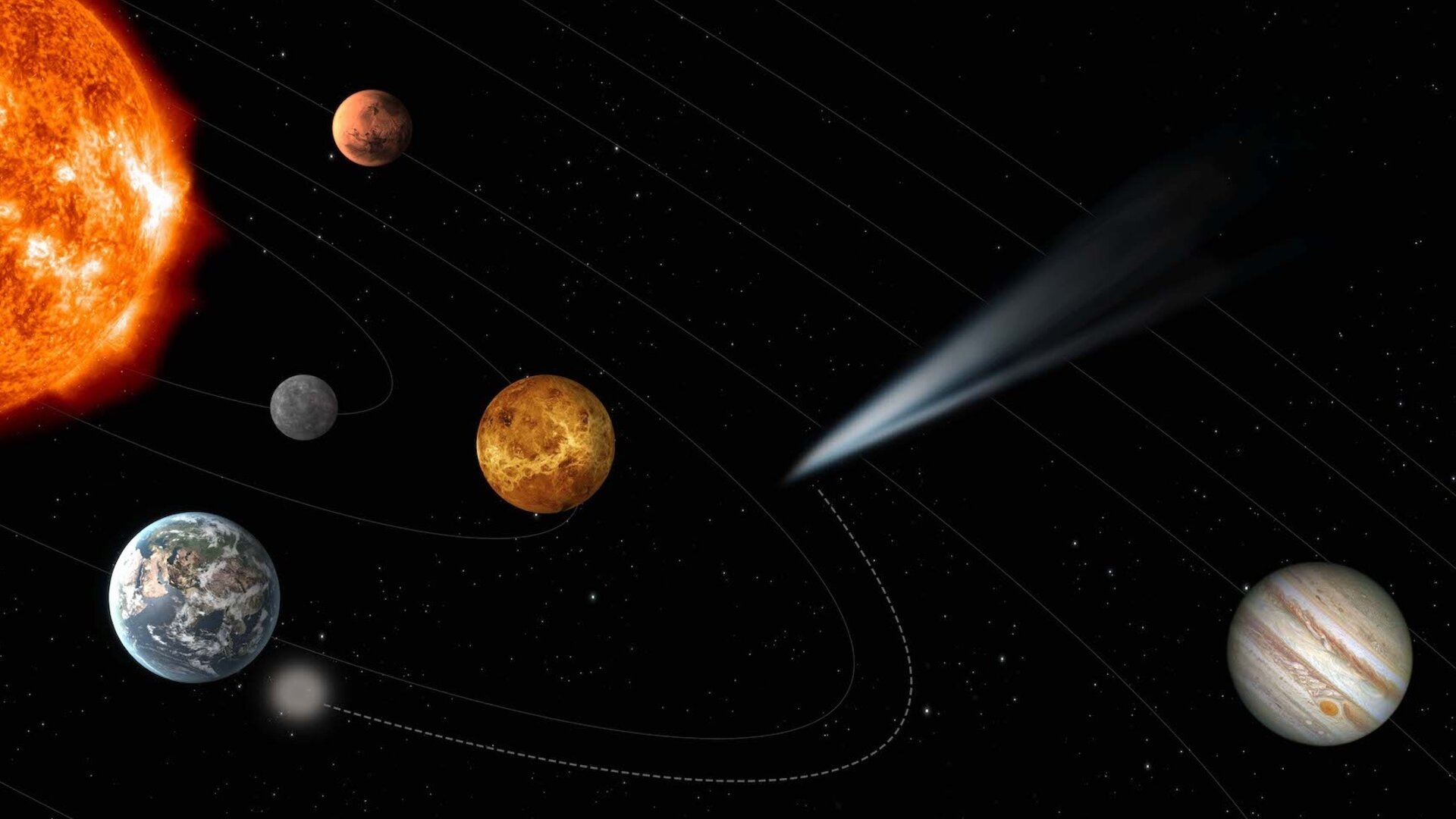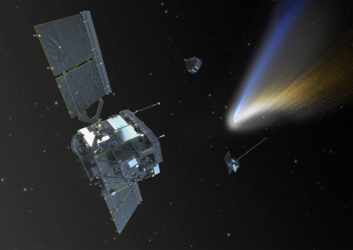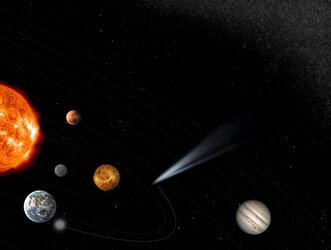Comet Interceptor factsheet
Overview of the Comet Interceptor mission
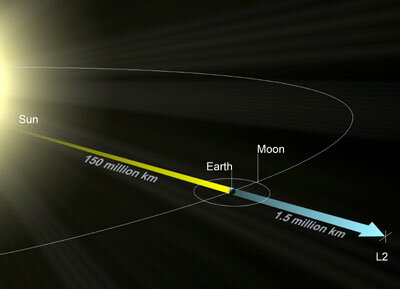
Name: Comet Interceptor
Status: Development (following adoption in June 2022)
Planned launch: 2029
Comet Interceptor is foreseen for launch as co-passenger with ESA’s exoplanet-studying Ariel spacecraft. Both missions will be delivered to the Sun-Earth Lagrange point L2, where Comet Interceptor will wait until journeying onwards to its chosen target
Mission type: Comet Interceptor is a ‘fast’ or F-class mission. ‘Fast’ refers to the implementation time, with a total development timeline from selection to launch readiness of nine years
Mission objectives: Comprising three spacecraft, Comet Interceptor will be the first mission to visit a long-period comet as it journeys into the inner Solar System. The mission will travel to an as-yet-undiscovered comet and complete a flyby. Its three spacecraft will perform simultaneous observations from multiple points around the comet, creating a 3D profile of a 'dynamically new' object that contains unprocessed material surviving from the very dawn of the Solar System
What’s special?: Previous comet missions, including ESA's pioneering Giotto and Rosetta spacecraft, encountered short-period comets – comets with orbital periods of less than 200 years that have approached the Sun many times along their orbits, and as a consequence have undergone significant changes. Rosetta's comet (67P/Churyumov–Gerasimenko) orbits the Sun once every 6.5 years while Comet 1P/Halley, visited by Giotto and other spacecraft in 1986, returns to our skies every 76 years.
Comet Interceptor is different: it will target a comet that has never or rarely visited the inner Solar System before. Such a comet could come from the vast Oort cloud that is thought to surround the outer reaches of the Sun's realm. As such, the comet will contain material that has undergone minimal processing since Sun and planets formed. The mission will therefore offer new insight into how comets evolve as they migrate inwards from the periphery of the Solar System.
In the past, ‘new’ comets have only been discovered a few months to years before they pass their closest approach to the Sun – too short notice to plan, build and launch a mission that can travel to a specific object before it moves away from the Sun again. However, recent advances in ground-based surveys (such as the Vera C Rubin Observatory in Chile, which aims to begin surveying the southern sky in January 2025) mean that the sky can be scanned more deeply to provide longer notice – and in any case, Comet Interceptor will be ready and waiting in space for a suitable comet encounter.
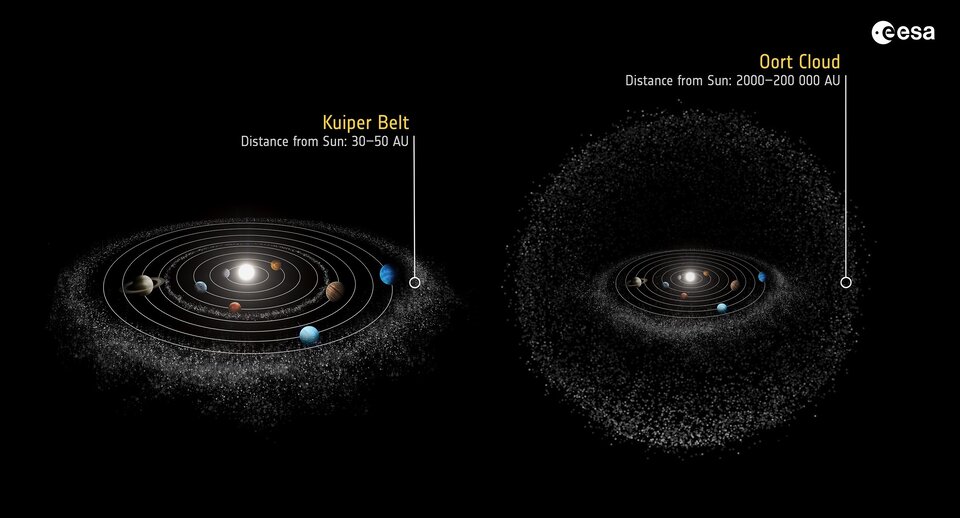
Spacecraft and instruments: The mission consists of a primary spacecraft and two probes. Each module will be equipped with a complementary science payload, providing different perspectives of the comet's nucleus and environment. The mission’s instrument suite will draw on heritage from other ESA missions, including a camera based on that aboard the ExoMars Trace Gas Orbiter; and a mass spectrometer and dust, fields and plasma instruments like those on Rosetta.
| Comet Interceptor's instruments | ||
| SPACECRAFT A | PROBE B1 | PROBE B2 |
|
CoCa High resolution Comet Camera |
NAC/WAC Narrow/Wide-Angle Camera |
EnVisS Entire Visible Sky Camera |
|
MANiaC Mass Analyzer for Neutrals in a Coma |
HI Hydrogen Imager |
OPIC Optical Periscopic Imager for Comets |
|
MIRMIS Modular Infrared Molecules and Ices Sensor |
PS Plasma Suite |
DFP-B2 Dust, Fields & Plasma instrument suite |
|
DFP-A Dust, Fields & Plasma instrument suite |
||
Journey and orbit: The three Comet Interceptor spacecraft will wait at the Sun-Earth Lagrange point L2, which is 1.5 million kilometres ‘behind’ Earth as viewed from the Sun, as a single unit. Once a suitable target is identified, this unit will travel together before the three modules separate 1-2 days prior to intercepting the comet.

History and collaboration: The mission was proposed to ESA in July 2018 in response to ESA’s call for fast-class missions, and was chosen to move into a more detailed definition phase in June 2019. It is a collaboration with the Japanese Space Agency (JAXA), who are providing one of the probes and its payload.
Comet Interceptor mission facts
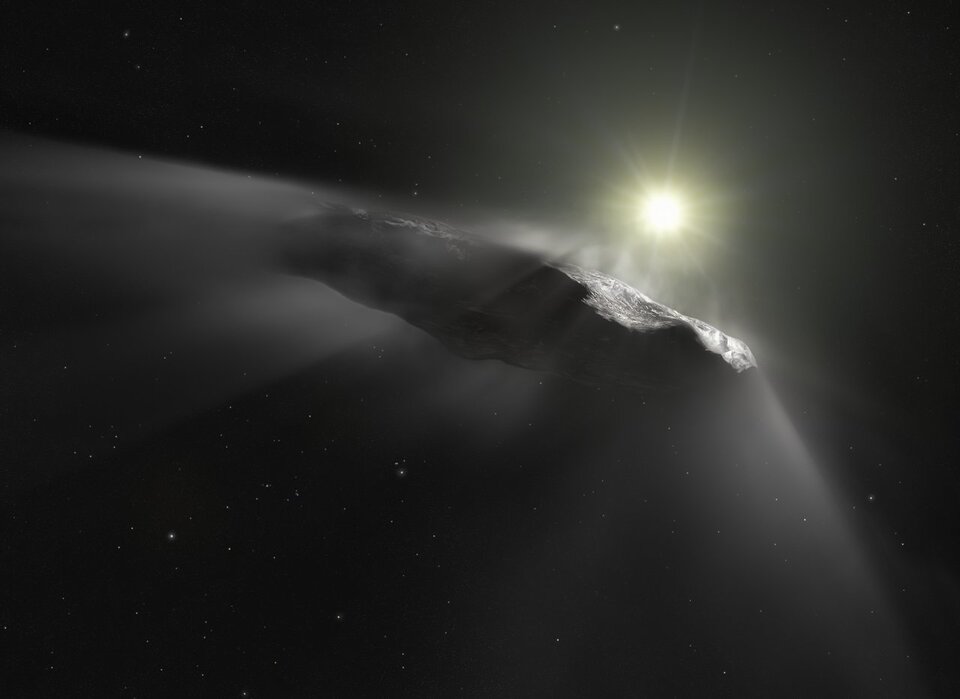
Comet Interceptor will be the first mission to visit a truly pristine comet or interstellar object that is only just starting its journey into the inner Solar System.
If the mission targets an interstellar interloper from another star system, like the famed ‘Oumuamua that flew past our Sun on a highly inclined orbit in 2017, this would offer an ideal chance to explore how comet-like bodies form and evolve in other star systems.
Despite not yet knowing its target, Comet Interceptor is expected to complete its mission within six years of launch.


